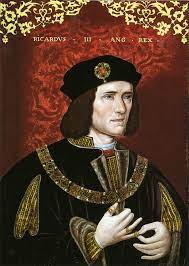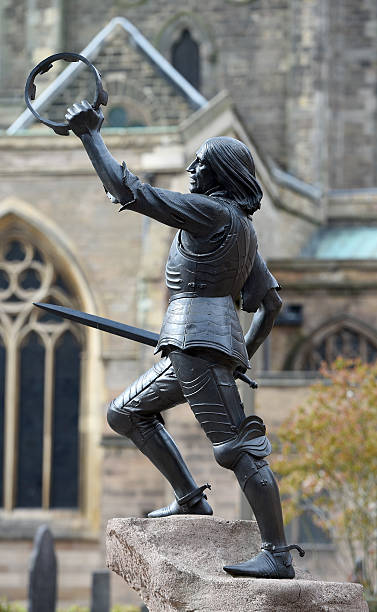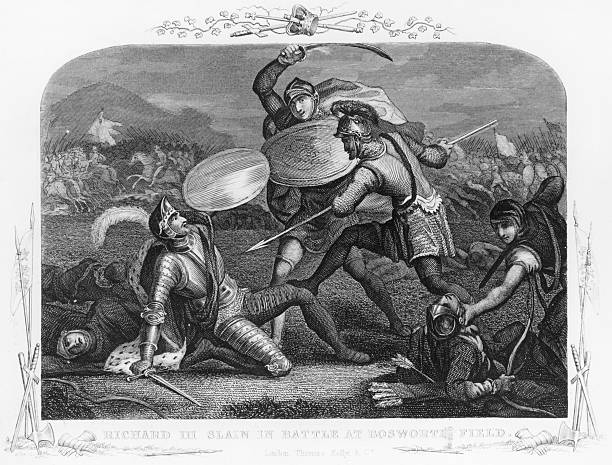There are many monarchs whose legacy has not stood the test of time. Popular in life, tyrants in death in some cases. Few like Richard III, however, lived the opposite way. Today, June 6, 2023, it is exactly 540 years since he was declared King. And even more than five centuries later, historians wonder how the third of the York brothers, so far from the Crown’s dream, ended up inheriting the throne and a reputation as a murderous uncle and usurper. For the “Ricardians,” there is an easy explanation: he was the target of Tudor propaganda, immortalized by a brilliant play immortalized in the words of William Shakespeare. And there is a drive to do belated justice to his memory.
The mission headed by Phillipa Langley, which has already been turned into a movie, suggests that there is room for this questioning. Phillipa has data that shows that Richard wasn’t as unpopular as we thought, and once she found his forgotten tomb, we listened. There are always two sides to a story and as Richard lost (literally) the crown in a battle, Henry VII led the narrative.
Ricardians were somewhat frustrated by the confirmation that the physical description of Richard III as a hunchback was not wrong (the skeleton proves marked scoliosis), but the rest is open to debate. In the opening monologue of the play, he introduces himself by saying that he is unworthy of love or pity, a “subtle, false and treacherous person”, and we see him as the only person responsible for creating conflict between the older brothers until their deaths, courting and seducing him. house for money, have his nephews killed… the list of crimes is long. “Richard loves Richard”, justifies evil narcissus in the play. Eventually, he recognizes that his “conscience has a thousand different languages,” and that “every story condemns me as a villain”, confirming that “If I die, not a soul will pity me. And why should they, since I myself find no pity for myself?”


Richard was wrong, as we know, many are touched by his story. Seventh surviving son and fourth surviving son of Richard, 3rd Duke of York, he was part of the oldest noble family in England as well as the richest, but never with a real chance of becoming heir to the Crown, and therefore almost nothing was recorded about his childhood as it was almost irrelevant. But when he was just 6 years old, a family conflict that would come to be known as The War of the Roses changed everything. Their father was opposed to the cousin and king, who represented the Lancaster house and as tensions increased, the children became part of plots and bloody battles. Not yet 10 years old, little Richard was left behind by his father, brothers, and uncle, was placed in the custody of relatives, saw his family arrested, found guilty of treason, and stripped of all their lands and titles. No one blames him for harboring grudges.
When his older brother, Edward, captured King Henry VI and took the throne, Richard was in the direct line of succession, aged just 8, and made Duke of Gloucester. It is uncertain when the scoliosis that determined his figure was discovered, it is thought that in early adolescence, when he was under the protection of the Earl of Warwick, whose daughter Anne would become his wife years later. Educated and trained as a knight, he continued to be ‘thrown’ around as alliances were quickly made and broken, but Richard remained faithful to his brother, King Edward IV while George, the middle one, did not. There are reports that Ricardo acted as a peacemaker between the Yorks – reports later used as a dissimulation by him – and, at the age of 18, he came to be recognized as a great strategist on battlefields, including the one that cost the life of his cousin and mentor, Warwick.

In a confrontation, there is no way to question the winner, but outside the battle is bloodier and more confusing. The series of murders, including the suspicious death of Henry VI, may have been Edward’s choice, but for many, he already had the finger of Richard, accused of having personally killed his son in battle and the king in his own cell. None of the allegations are based on hard evidence, just sources that put him there.
Once married to Anne, Richard fell out with George over the Warwick inheritance (his brother was married to the Kingmaker’s other daughter, Isabel), and only when Edward IV intervened did they reconcile. The next 10 years were spent in Yorkshire, to the north, where his legitimate son, Edward of Middleham, and two illegitimates, John and Catherine, whose mothers are unknown, were born. In Yorkshire, Richard was well-liked and even known as ‘fair’, something unusual for nobles. It was around 1475 that things started to get dubious, with Richard not seeing eye to eye with his older brother.
When Edward IV died unexpectedly in April 1483, England was again vulnerable to France and internally there was no union to consolidate command. The Queen Consort, Elizabeth Woodville, opposed her husband’s trusted men, requiring Richard’s intervention to oversee the succession of her 12-year-old nephew as Edward V. George had already been executed years earlier by Treason and his disinherited children. In the midst of all this, the marriage of Edward IV and Elizabeth Woodville was declared invalid for bigamy, leaving Richard to assume the Throne. Ricardians will always be able to argue that many things coincide, but that the marriage was only invalidated when Richard was at the head of resolving the succession seems extremely suspicious. The current that defended the return of the Lancasters, in the person of Henry Tudor, gained momentum again.


It doesn’t help that the nephews were imprisoned in the Tower of London and never seen after that. Documents from Richard’s brief reign suggest an intelligent and just rule, being praised for the quality of the laws he introduced. Another argument in his favor is that his sister-in-law, Elizabeth Woodville, placed her daughters in his custody, even with Henry Tudor swearing that he would marry her eldest daughter, Elizabeth of York, that is, there would be an understanding between them (but the promise would also have her finger, apparently). Everything gets worse for him when his only legitimate son, Edward, died a few months before his mother, Anne, leaving a serious problem of succession.
A widowed king without children was unacceptable, so Richard began to negotiate a marriage with Joan of Portugal, a princess of Lancaster’s blood while trying to negotiate his niece’s marriage to someone other than a Tudor. At the time, this doesn’t help the Ricardians either, there were rumors of incest and that he intended to marry Elizabeth, something he had to publicly deny. Unsurprisingly, it’s the troubled years that serve as the basis for Shakespeare’s play.
Henry Tudor gained French support for his cause and he invaded England, defying Richard III, in 1485. The two clashed at Bosworth, near Leicestershire. Betrayed on the field by Thomas, Lord Stanley, Henry Tudor’s stepfather, Richard was violently defeated, fighting bravely until he was dethroned and his body was thrown into a church in the city where more than 400 years later he was located. If the Richard III Society succeeds, many of the crimes attributed only to him will have other perpetrators. In little less than two years with the Crown, he would have had a just and equitable government, which did not last because of politics and resentments greater than his existence.


The Hollow Crown series – Shakespeare’s plays about the Wars of the Roses – is no longer on Amazon Prime Video, but The White Queen series, which is in line with this modern narrative, is on Lionsgate Plus. and the film about Phillipa’s saga, The Lost King, will soon hit platforms. Here are the tips!



Descubra mais sobre
Assine para receber nossas notícias mais recentes por e-mail.
